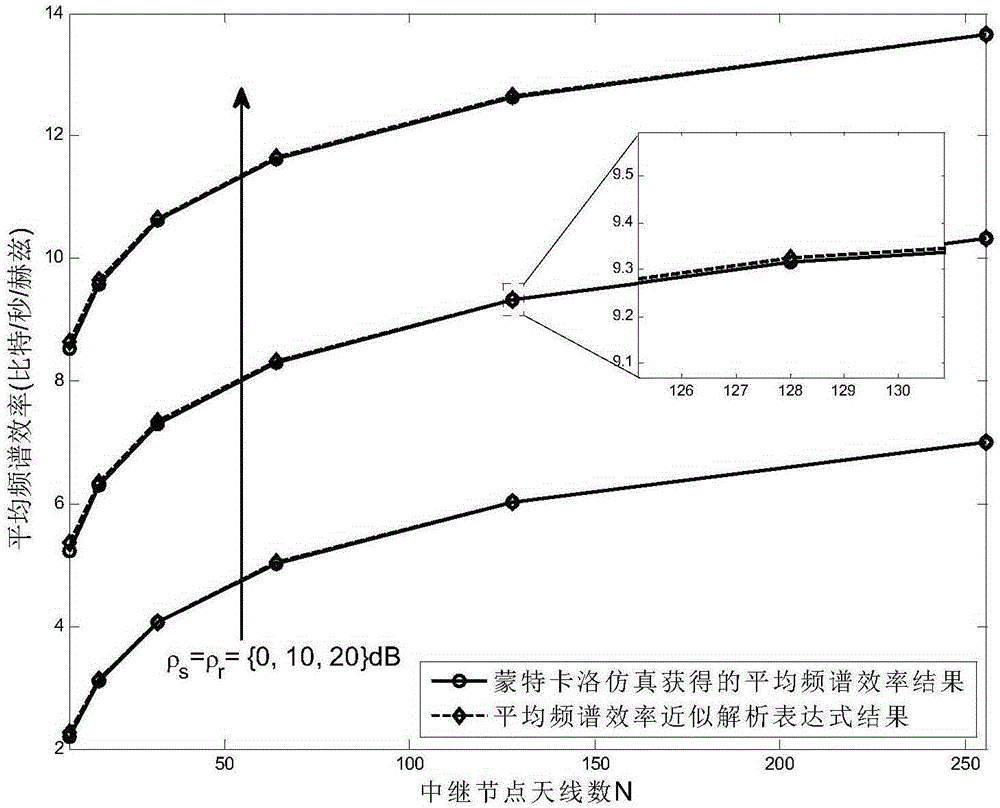Single-user large-scale antenna relay system power allocation method based on energy efficiency optimization
A large-scale antenna and relay system technology, applied in power management, wireless communication, electrical components, etc., can solve problems such as no analytical expression, difficult solution process, complex objective function, etc.
- Summary
- Abstract
- Description
- Claims
- Application Information
AI Technical Summary
Problems solved by technology
Method used
Image
Examples
Embodiment Construction
[0073] Combine figure 2 The algorithm flow chart shown in the present invention specifically describes a single-user large-scale antenna relay system power allocation method based on the best energy efficiency of the present invention, including the following steps:
[0074] 1). The relay node obtains its ideal channel state information between all source nodes and sink nodes through channel estimation, that is, the channel vector with And both h and g obey the complex Gaussian distribution Assuming that the system adopts the time division duplex system and the channel obeys flat block fading, that is, the channel coefficient remains unchanged during the channel coherence time;
[0075] 2). Established at the relay node to maximize the total system energy efficiency function η(ρ s ,ρ r ) Is the goal, the minimum spectrum efficiency of the system is the constraint, and the source node transmit power ρ s And relay node transmit power ρ r The mathematical optimization model for the ...
PUM
 Login to View More
Login to View More Abstract
Description
Claims
Application Information
 Login to View More
Login to View More - R&D
- Intellectual Property
- Life Sciences
- Materials
- Tech Scout
- Unparalleled Data Quality
- Higher Quality Content
- 60% Fewer Hallucinations
Browse by: Latest US Patents, China's latest patents, Technical Efficacy Thesaurus, Application Domain, Technology Topic, Popular Technical Reports.
© 2025 PatSnap. All rights reserved.Legal|Privacy policy|Modern Slavery Act Transparency Statement|Sitemap|About US| Contact US: help@patsnap.com



